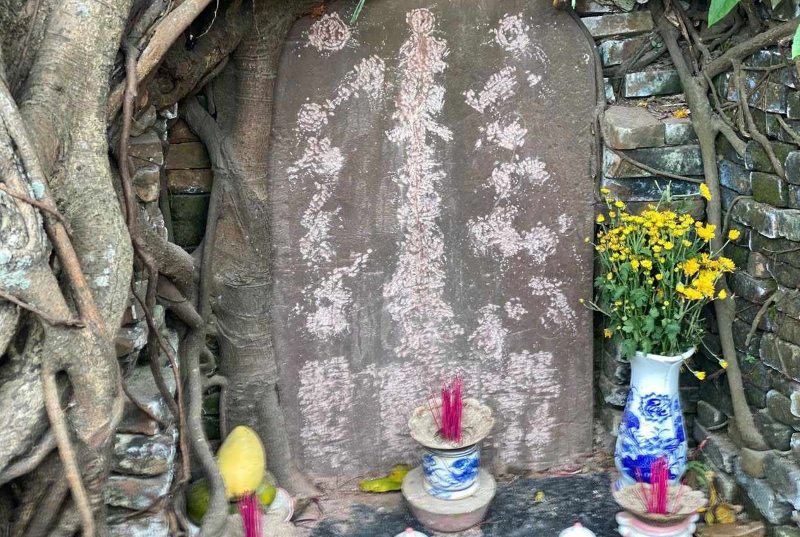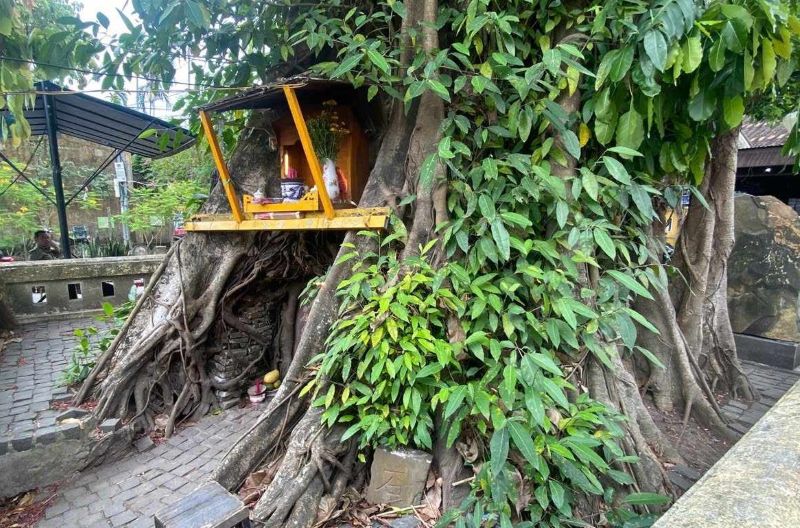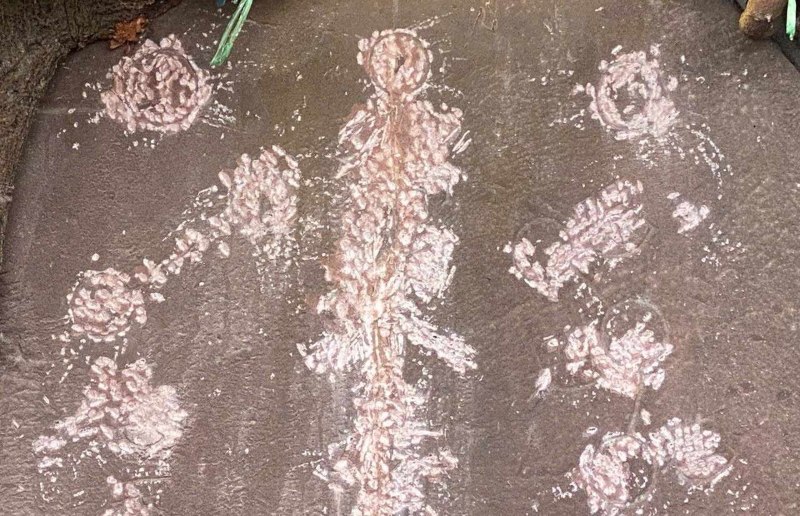Important relic in the heart of Hoi An ancient citadel
According to information from the Hoi An Cultural Heritage Conservation Management Center, at around 2:00 a.m. on March 31, people discovered a motorbike parked on the side of Phan Chau Trinh Street, next to a banyan tree (in Cam Pho Ward, Hoi An City) and heard the hammer voting.
By morning, the waterford stele in this area had been severely damaged.

After inspecting the scene, Mr. Pham Phu Ngoc, Director of the Hoi An Cultural Heritage Conservation Center, said: "All Han Nom characters and carvings on the stele surface were crushed, causing almost complete damage".
Given the seriousness of the incident, the People's Committee of Hoi An City has directed the authorities to urgently investigate and search for the subject who caused this sabotage.
According to the list of Historical - Cultural Relics of Hoi An City, the water-culture stele is located in the protection area I of the World Cultural Heritage - Hoi An Ancient Urban Area, is a type I preservation area and is owned by the State.

This ancient stele is placed inside a small altar built of bricks, located under the ancient banyan tree near Cau Pagoda. On the surface of the stele engraved with Han Nom characters and the talisman with beliefs. The content of the beer has the words: "The North De decoys the extreme of the Water Path", showing the purpose of the water to cover the water according to folk beliefs.
Cau Pagoda and the connection with the border stele
Although the exact date of the stele has not been determined, many researchers believe that this stele is closely related to the worship of the god Bac De Tran Vu at Cau Pagoda.
According to legend, Cau Pagoda was built to ward off fish and reptiles, protecting residents from natural disasters and floods. The stele is considered a part of this spiritual system, to maintain peace for the community. Reversal
This stele is not only a historical artifact but also has profound spiritual significance for the local community.
Cau Pagoda, also known as Lai Vien Kieu, is a prominent symbol of Hoi An ancient town. This bridge was built in the 17th century by Japanese traders and has undergone many restorations. In 1719, King Nguyen Phuc Chu named the bridge "Lai Vien Kieu", meaning "Place to Receive Visitors from afar".

The combination of Cau Pagoda and the stele shows the ancient people's belief in using spiritual elements to protect the community. The stele is placed near Cau Pagoda to enhance the effectiveness of guarding, preventing negative impacts from nature and bringing prosperity to local residents. Reversal
The destruction of the ancient stele not only caused material loss but also affected the cultural and historical values of Hoi An.
Quang Nam Provincial Police are expanding the investigation of the incident. The government and historical researchers call on the community to join hands to protect the precious cultural values of Hoi An from the risk of encroachment.











